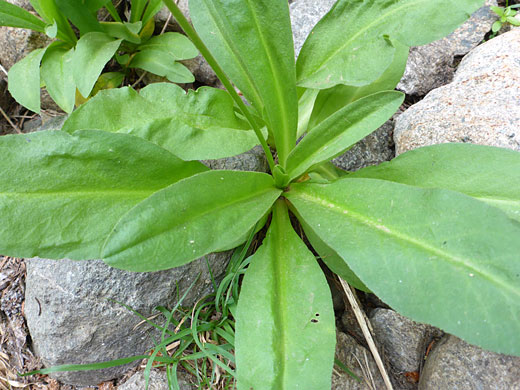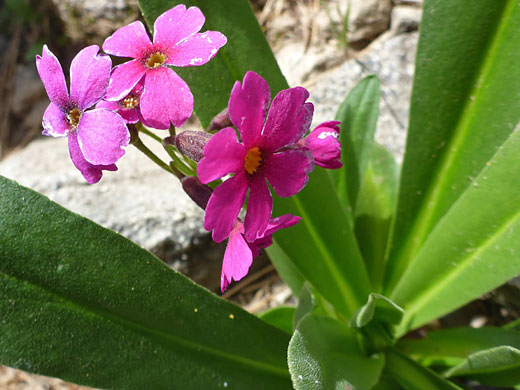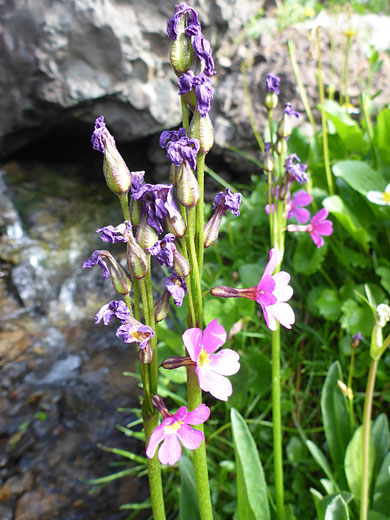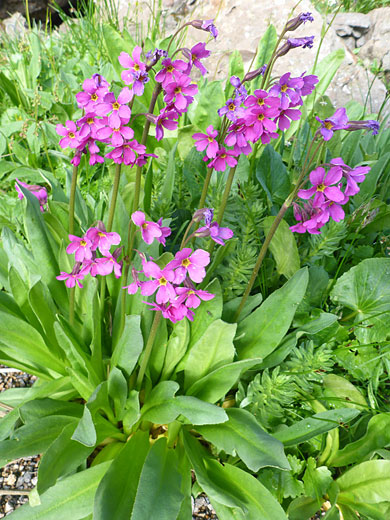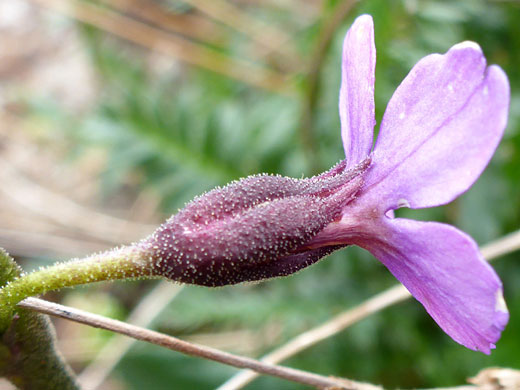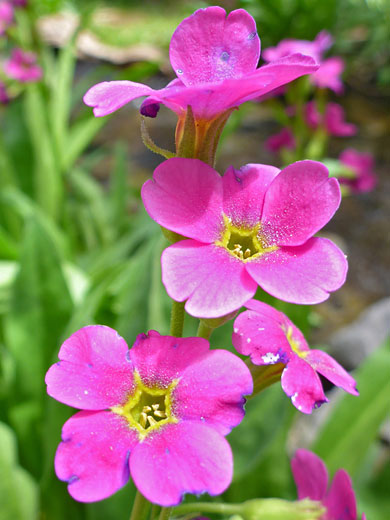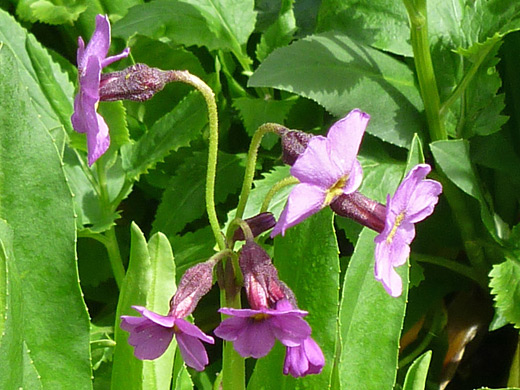Common name:
Parry's primrose
Family:
Scientific name:
Primula parryi
Main flower color:
Range:
The Great Basin and Rocky Mountain states
Height:
Between 3 and 16 inches
Habitat:
Wet locations at high elevations; boggy meadows, streamsides, snow-melt areas; 9,000 to 13,800 feet
Leaves:
Large, lanceolate, up to 12 inches long, with small edge teeth
Season:
June to August
Primula parryi is a distinctive, brightly-colored plant that produces many large, smooth, upwards-pointed basal leaves - up to 1 foot long, lined by small, evenly spaced teeth, and a single, thick, leafless stalk that rises to about the same height (or slightly more) as the leaves and is topped by a small number (3 to 12) of pink flowerheads. Leaves have a prominent, lighter-colored central vein, and faint lateral veins.
Flowers are formed of a green or purplish calyx and a pink corolla that opens to five lobes, about one inch across. The center of the flower is yellow. Flower stalks, and the outside of the corolla, are covered by tiny glandular hairs. The stalks are commonly bent by 90 degrees or more, so that the flowers point sideways. The corolla withers to purple. The plant exudes a bad, skunk-like smell, especially when touched.
Flowers are formed of a green or purplish calyx and a pink corolla that opens to five lobes, about one inch across. The center of the flower is yellow. Flower stalks, and the outside of the corolla, are covered by tiny glandular hairs. The stalks are commonly bent by 90 degrees or more, so that the flowers point sideways. The corolla withers to purple. The plant exudes a bad, skunk-like smell, especially when touched.
All Contents © Copyright The American Southwest | Comments and Questions | Contribute | Site Map



